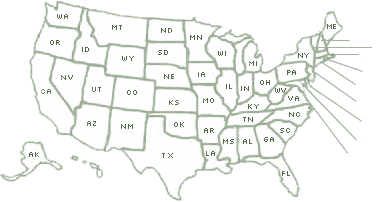
Image by Chulmin1700, Pixabay
ActionHub and its parent company were paid a fee to publish this article unedited. The views or opinions expressed here are those of the author and may not reflect those of ActionHub or any of its affiliates.
Camping in remote locations offers a unique sense of adventure and freedom, but it also has challenges, such as the rigorous vehicle preparation process to ensure your safety.
Thus, this article explores essential tips for preparing your vehicle for remote camping trips. We’ll cover critical checks like ensuring your tires and brakes are in top shape, inspecting fluid levels, and verifying battery health. Additionally, we’ll look at often-overlooked accessories that can be lifesavers.
10 Tips for Preparing Your Car for Remote Camping Trips
1. Check Tire Condition and Pressure
Inspect the tread depth to ensure your tires can handle rough terrains; worn-out treads reduce grip and increase the risk of slipping on uneven or muddy roads. In addition, look for sidewall damage, which can lead to blowouts, particularly on rocky trails.
Another area of concern is the pressure of all four tires and the spare, as underinflated tires make it harder to navigate rugged surfaces and increase fuel consumption. Properly inflated tires also help prevent punctures and provide smoother handling on off-road adventures.
2. Equip Your Vehicle with Safety Accessories
When preparing your car for remote camping, packing suitable safety accessories can be a lifesaver. For instance, a snatch strap and winch are essential for off-road recovery, allowing you to safely extract your vehicle if it gets stuck in mud or sand.
In addition, remember to check small but critical accessories like windshield wiper blades. Functioning wiper blades ensure clear visibility during rain or dusty conditions, which can be common in remote areas.
Check your wiper blades for signs of wear and tear, such as streaking, squeaking, or visible cracks in the rubber. If your car needs new ones, an online search can help you find a suitable replacement. You can search for dependable GMC wiper blades or another model for a quick comparison to find the best quality.
3. Ensure Brake Functionality
Properly functioning brakes are essential for a safe camping trip, especially when navigating challenging terrains like steep hills or rocky roads. Before your journey, inspect your brakes for signs of wear, such as squealing noises, a spongy brake pedal, or decreased stopping power.
These can indicate worn-out pads or rotors in need of replacement.
Additionally, check the brake fluid levels and ensure they are topped off, as low levels can lead to decreased braking efficiency, which is dangerous in remote areas.
4. Verify Battery Health
The risk of battery failure increases in remote locations. Therefore, assess the age, charge levels, and terminal connections before you start your trip. In addition, carrying a portable jump starter or a backup power source can save you from being stranded.
5. Test All Lights and Signals
Functioning lights and signals are vital for safe driving, particularly in low-visibility or dark conditions common in remote areas. Hence, check that your headlights, brake lights, and turn signals are all working correctly. Your interior lights also matter because they are handy when camping at night. On top of that, pack spare bulbs in case of unexpected failures during your trip.
6. Inspect Your Fluid Levels
Inspect all essential fluid levels in your vehicle, including oil, coolant, and transmission fluid, to avoid breakdowns. Low levels of any of these can lead to overheating or mechanical failure, especially during long drives through rugged areas. Carrying extra fluids is wise, particularly in remote areas where service stations may be unavailable.
7. Prepare an Emergency Kit
An emergency kit tailored to your camping trip can be a lifesaver. Include essential items like tools, a first aid kit, a fire extinguisher, and a tire repair kit. Depending on the season and destination, you may need to customize your kit with weather-specific gear. Additionally, always have a map and a working GPS or satellite device to navigate remote areas without cell service.
8. Invest in Roof Racks or Storage Solutions
Roof racks or other storage solutions can make a big difference when preparing for remote camping trips. They provide extra space for gear like tents, camping chairs, and other bulky items, freeing up space inside your vehicle.
Further, organizing your gear inside the vehicle maximizes space and makes items easily accessible. Fasten everything securely to avoid damage to your car and supplies during transit.
9. Protect Your Vehicle with Mud Flaps and Floor Mats
Mud flaps are practical for preventing rocks, mud, and debris from damaging the undercarriage, especially when driving on rough, unpaved roads during remote camping trips. They act as shields, keeping dirt and stones from causing scratches or damage to the lower parts of your car.
Additionally, durable floor mats are essential for maintaining a clean interior, particularly during muddy or wet adventures. Quality mats trap dirt, moisture, and grime, preventing long-term damage to the flooring and making cleanup easier after your trip.
10. Plan for Fuel Efficiency and Range
Knowing your fuel consumption is crucial in remote areas with few fuel stations. Thus, plan your route with fuel stations in mind and carry extra fuel in portable fuel cans as a precaution.
In addition, monitor your driving habits. Maintaining a steady pace and avoiding sudden acceleration or braking can boost fuel efficiency, especially on long trips. On top of that, reducing the weight of your vehicle by packing only essential gear can further enhance your fuel economy. Check local regulations on carrying extra fuel, as certain areas may have restrictions.
Conclusion
Preparing your car before a remote camping trip is crucial for safety and convenience. It reduces the risk of breakdowns in hard-to-reach areas and allows you to enjoy a stress-free adventure. As such, checking vital components like tires, brakes, and fluid levels helps prevent unexpected mechanical failures.
In addition, having suitable safety accessories, like a snatch strap or winch, prepares you for any off-road challenges, which is particularly important when help may be far away. Further, a well-stocked emergency kit tailored to your destination can be a lifesaver, providing you with the tools and supplies needed to handle any unexpected situations.
 Your Privacy Choices
Your Privacy Choices


 The
The